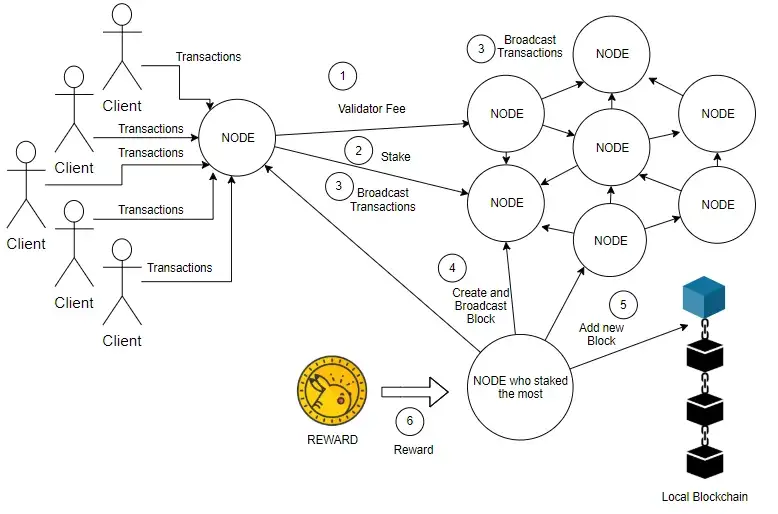From this fine walkthrough.
I find a lot of value in ELI5 implementations. Here I ran everything in TypeScript and rewrote a couple of functions to make them more elegant or intuitive (for me).
The web now supports modules, but this module system is not so compatible with Node and still less TS.
fetch is at 2.6.5 to avoid issues.
It's clear to me that in a PoW system any validator out of touch with the network will temporarily have a different chain. And we know about failures to reach consensus and how they resolve.
In PoS it seems we have many transactions on many nodes. And then they elect a validator using staking.
Also, I am a little confused about how a WS server works. Here it seems a server has many sockets to connect with peers. It is not really a server-client model.
The transaction-pool will be an object updated in real time that contains all the new transactions submitted by all miners in the network.
Users will create transactions and then they will submit every transaction to the pool. These new transactions, present in the pool, will be considered unconfirmed.
Miners take a group of transactions from this pool and create the block and makes the transaction confirmed.
As described in tag v0.0.1, we make a basic blockchain. Clients ask a chainServer to mine, and a p2pServer broadcasts all blocks. Every peer applies the longest chain rule.
To add staking:
-
a client sends transactions to the chainServer.
-
when the threshold is reached, each peer will check if it is the leader
-
if nobody is, nothing will happen.
-
a peer can send a message with type STAKE, and some amount to stake
-
then the chain records that amount of staking
-
the chain also transfers the block fee to the validator
-
a peer can send a message with type validator fee
-
the chain checks if it's valid and if so the peer is added to the list of validators
-
and the peer gets the transfer fee for that transaction
So far it is lacking an easy demo of staking and validating. Nor is there a distinction built in yet.
